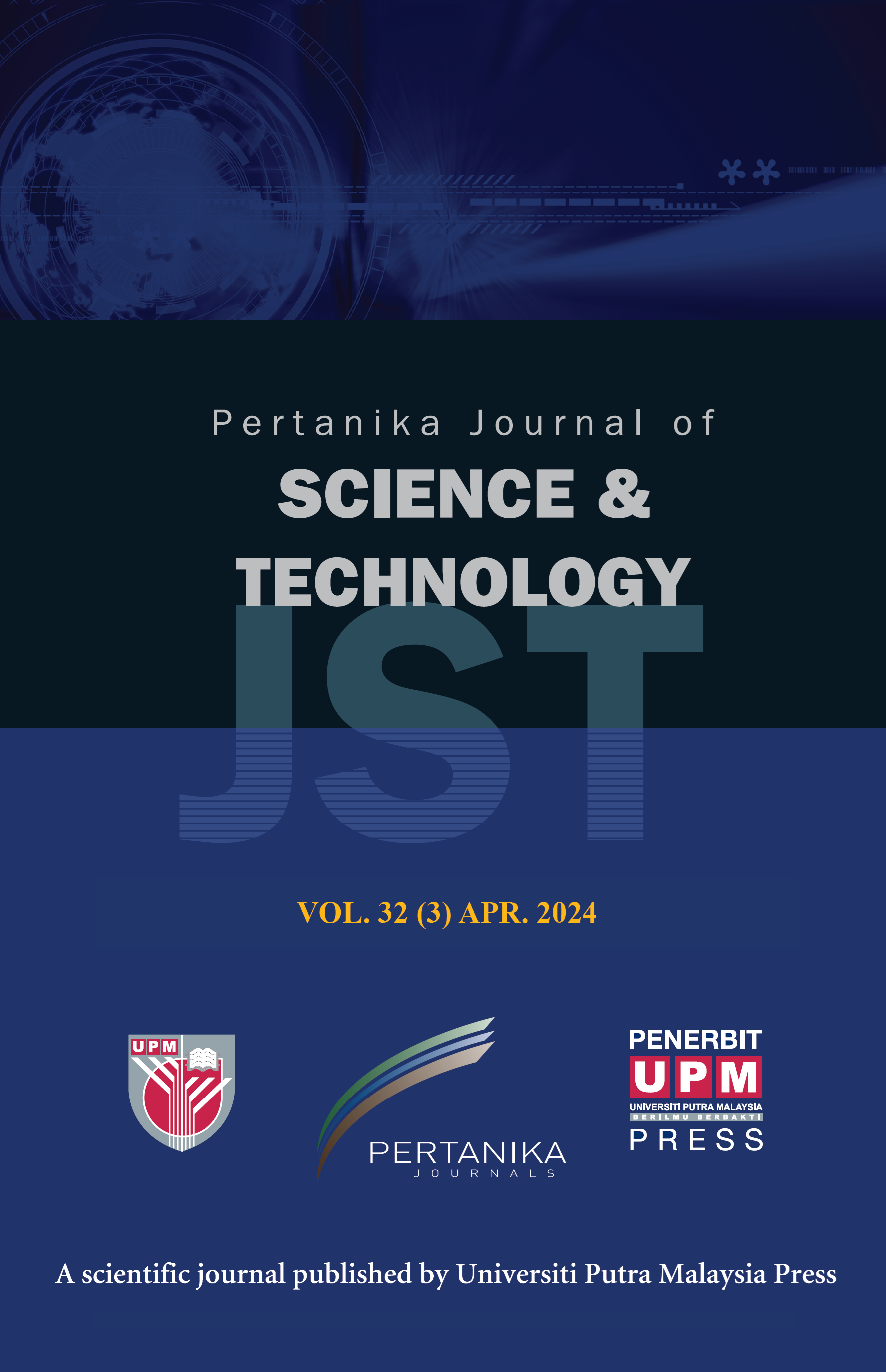PERTANIKA JOURNAL OF SCIENCE AND TECHNOLOGY
e-ISSN 2231-8526
ISSN 0128-7680
J
J
Pertanika Journal of Science & Technology, Volume J, Issue J, January J
Keywords: J
Published on: J
J
-
Albrecht, F. (2017). The social and political impact of natural disaster: Investigating attitudes and media coverage in the wake of disaster [Doctoral dissertation, Uppsala University]. Digital Comprehensive Summaries of Uppsala Dissertations. http://uu.diva-portal.org/smash/get/diva2:1090236/FULLTEXT01.pdf
-
Alias, N. A., Mohd Idris, M. D., Siwar, C., Md Mahmudul, A., & Yasar, M. (2021). Community preparation and vulnerability indices for floods in Pahang State of Malaysia. Land, 10(198), 1-23. https://doi.org/10.3390/land10020198
-
Bănică, A., Kourtit, K., & Nijkamp, P. (2020). Natural disaster as a development opportunity: A spatial economic resilience interpretation. Review of Regional Research, 40(3), 223-249. https://doi.org/10.1007/s10037-020-00141-8
-
Burnes, B. (2009). Managing change: A strategic approach to organizational dynamics. Pearson Education.
-
Chang, S. E. (2010). Urban disaster recovery: A measurement framework and its application to the 1995 Kobe earthquake. Disasters, 34(2), 303-327. https://doi.org/10.1111/j.1467-7717.2009.01130.x
-
Creswell, J. W. (2014). Research design: Qualitative, quantitative and mix methods approaches. Sage Publication.
-
Dobashi, K., Nasmine, M., Shigemaru, J., Tsunoda, T., Shimizu, K., Yoshino, A., & Nomuro, S. (2014). Psychological effects of disaster relief activities on Japan ground self-defense force personnel following the 2011 great east Japan earthquake. Psychiatry, 7(2), 190-198. https://doi.org/10.1521/psyc.2014.77.2.190
-
Elfithri, R., Halimshah, S., Abdullah, M. P., Mokhtar, M., Toriman, M. E., Embi, A. H., Abdullah, M., Heng, L. K., Ahmad Maulud, K. N., Salleh, S., Maizan, M., & Ramzan, N. M. (2017). Pahang flood disaster: The potential flood drivers. Malaysian Journal Geoscience, 1(1), 34-37. https://doi.org/10.26480/mjg.01.2017.34.37
-
Imperiale, A. J., & Vanclay, F. (2016). Experiencing local community resilience in action: Learning from post-disaster communities. Journal of Rural Studies, 47(Part A), 204-219. https://doi.org/10.1016/j.jrurstud.2016.08.002
-
Isahak, A., Reza, M. I. H., Siwar, C., Ismail, S. M., Sulaiman, N., Hanafi, Z., Zainuddin, M. S., & Taha, M. R. (2018). Delineating risk zones and evaluation of shelter centres for flood disaster management along the Pahang River Basin, Malaysia. Jàmbá: Journal of Disaster Risk Studies, 10(1), 1-7. https://doi.org/10.4102/jamba.v10i1.501
-
Jurjanos, M., & Seekamp, E. (2018). Rural coastal community resilience: Assessing a framework in eastern North Carolina. Ocean and Coastal Management, 162, 137-150. https://doi.org/10.1016/j.ocecoaman.2017.10.010
-
Lee, J. Y., Kim, S. W., & Kim, J. M. (2020). The impact of community disaster trauma: A focus on emerging research of PTSD and other mental health outcomes. Channam Medical Journal, 56(2), 99-107. https://doi.org/10.4068/cmj.2020.56.2.99
-
Liamputtong, P. (2010). Cross-cultural research and qualitative inquiry. Turkish Online Journal of Qualitative Inquiry, 1(1), 1-83.
-
Madhuri, M., Tewari, H. R., & Bhowmick, P. K. (2014). Livelihood vulnerability index analysis: An approach to study vulnerability in the context of Bihar. Jamba: Journal of Disaster Risk Studies, 6(1), 1-13. https://doi.org/10.4102/jamba.v6i1.127
-
McDermott, B. M., & Cobham, V. E. (2012). Family functioning in the aftermath of a natural disaster. BMC Psychiatry, 12, Article 55. https://doi.org/10.1186/1471-244X-12-55
-
Md. Akhir, N., Zakaria, S. M., Soh, O. K., & Amin, A. S. (2020). A review on the psychological issue and psychosocial intervention: Flood disaster in Malaysia. International Journal of Psychosocial Rehabilitation, 24(4), 4337-4349. https://doi.org/10.37200/IJPR/V24I4/PR201539
-
Moreno, J., & Shaw, D. (2018). Women’s empowerment following disaster: A longitudinal study of social change. Natural Hazards, 92, 205-224. https://doi.org/10.1007/s11069-018-3204-4
-
Moreno, J., Lara, A., & Torres, M. (2018). Community resilience in response to the 2010 Tsunami in Chile: The survival of a small-scale fishing community. International Journal of Disaster Risk Reduction, 33, 376-384. https://doi.org/10.1016/j.ijdrr.2018.10.024
-
Morton, M. J., & Lurie, N. (2013). Community resilience and public health practice. American Journal of Public Health, 103(7), 1158-1160. https://doi.org/10.2105/AJPH.2013.301354
-
Norris, F. H., Tracy, M., & Galea, S. (2009). Looking for resilience: Understanding the longitudinal trajectories of responses to stress. Social Sciences and Medicine, 68(12), 2190-2198. https://doi.org/10.1016/j.socscimed.2009.03.043
-
Nygaard, E., & Heir, T. (2012). World assumptions, post traumatic stress and quality of life after a natural disaster: A longitudinal study. Health and Quality of Life Outcome, 10, Article 76. https://doi.org/10.1186/1477-7525-10-76
-
Palekiencė, O., Bruneckienė, J., & Simanavičienė, Z. (2014). Critical analysis of loss and damage concepts under process of economic assessment. Procedia-Social and Behavioral Sciences, 156(2), 304-309. https://doi.org/10.1016/j.sbspro.2014.11.193
-
Schlehe, J. (2010). Anthropology of religion: Disasters and the representations of tradition and modernity. Religion, 40(2), 112-120. https://doi.org/10.1016/j.religion.2009.12.004
-
Tan, N. T. (2013). Policy and collaboration for social recovery after disaster. Journal of Social Work in Disability and Rehabilitation, 12(1-2), 145-157. https://doi.org/10.1080/1536710X.2013.784606
-
Toland, J., & Carrigan, D. (2011). Educational psychology and resilience: New concept, new opportunities. School Psychology International, 32(1), 95-106. https://doi.org/10.1177/0143034310397284
-
Vollmer, H. (2013). The sociology of disruption, disaster and social change. Cambridge University Press.
-
Wilson, G. A., Hu, Z., & Rahman, S. (2018). Community resilience in rural China: The case of Hu Village, Sichuan Province. Journal of Rural Studies, 60, 130-140. https://doi.org/10.1016/j.jrurstud.2018.03.016
-
Wisitwong, A., & MacMillan, M. (2010). Managament of flood victims: Chainat Province, Central Thailand. Nursing and Health Sciences, 12, 4-8. https://doi.org/10.1111/j.1442-2018.2009.00504.x
-
Wood, N. J., Burton, C. G., & Cutter, S. L. (2010). Community variations in social vulnerability to Cascadia-related tsunamis in the U.S Pacific Northwest. Natural Hazards, 52(2), 369-389. https://doi.org/10.1007/s11069-009-9376-1
-
Yin, R. K. (2014). Case study research design and methods. Sage Publication.
-
Yusoff, S., Abdul Aziz, R., & Yusoff, N. H. (2018). Impak sosioekonomi bencana banjir 2014: Tindakan penyesuaian dan kesiapsiagaan lokal [The socio-economic impact of the 2014 flood disaster: Local adaptation and preparedness]. Geografia Online Malaysian Journal of Society and Space, 14(4), 74-88. http://ejournal.ukm.my/gmjss/article/view/27581
-
Zakour, M. J. (2010). Vulnerability and risk assessment: Building community resilience. In D. F. Gillespie & K. Danso (Eds.), Disaster concepts and issues: A guide for social work education and practice (pp. 15-60). Council on Social Work Education.
ISSN 0128-7680
e-ISSN 2231-8526




